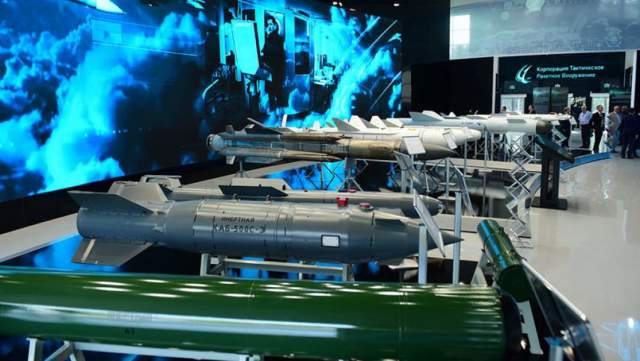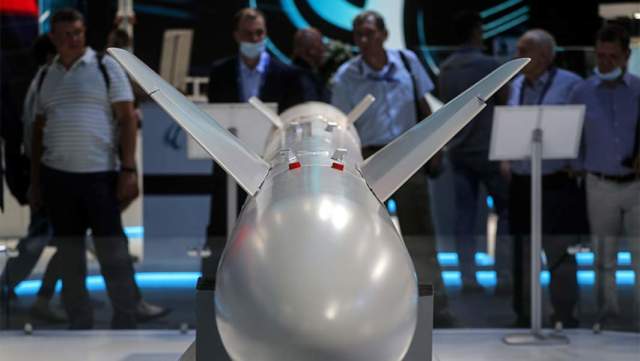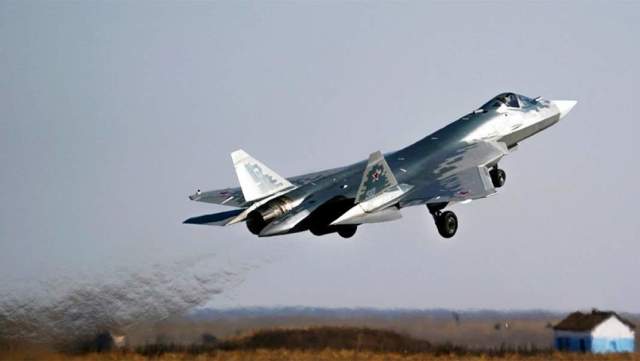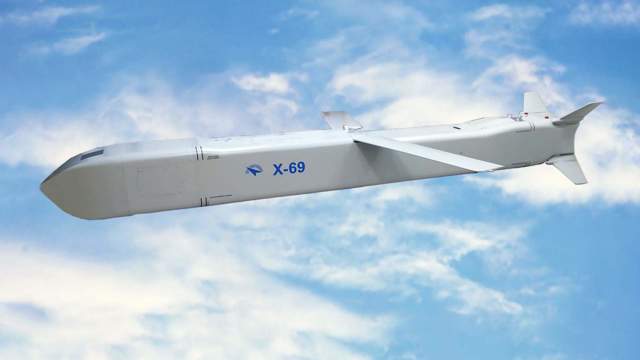The modular product for hitting ground targets has already been tested in battles
At the international forum "Army-2022" starting on August 15, the aviation high-precision cruise missile X-69 will be presented to the general public for the first time. With a range of at least 300 km, it occupies an intermediate place between short-range ammunition and strategic cruise products. What is the revolutionary nature of the novelty and why it was tested earlier under a different name, a military expert Dmitry Kornev understood specifically for Izvestia.
Form and content
We are all used to the fact that modern rockets for airplanes have an elongated cigar-shaped body of circular cross-section. But a few photos show that the X-69 is radically different from the classic air–to-ground ammunition. It has a square cross section. Such a unique technical solution for our aviation was applied specifically to accommodate the maximum number of missiles in the internal armament compartments of promising strike aircraft. In addition, this design allows you to fit more fuel and electronics into the same dimensions, a more powerful warhead and much more compactly "clean up" folded wings.
Due to the use of modern materials and the specific configuration of the nose cone, as well as the almost complete absence of protruding parts, the X-69 became as invisible as possible in flight. Rockets of previous generations carried a marching turbojet engine outside. It was attached to the hull from below — thereby ensuring the most complete use of the volume of the circular hull in cross-section for fuel and warhead. But when the novelty was made "square", then there was an additional volume for fuel and the engine turned out to be removed inside. The ammunition has become more compact and inconspicuous.

Photo: Tactical Missile Armament Corporation
Image source: iz.ru
The X-69 is designed for high-precision non-nuclear destruction of any, even heavily protected ground targets with previously known coordinates. The closest Western analogues of the new Russian missile can be called AGM-158 JASSM, Scalp EG / Storm Shadow and Taurus. Today, the Russian front—line aviation has only one aircraft with an internal armament compartment - this is the fifth-generation Su-57 fighter. Probably, in a couple of years, a light front-line fighter, now known as the Su-75 Checkmate, can join it. But from the external suspension, the X-69 will be able to use any modern strike aircraft of the Russian Aerospace Forces: Su-30, Su-35, Su-34.
Family tree
The development of a new missile for arming fifth-generation aircraft was started at the A.Ya. Bereznyak State Machine-Building Design Bureau (GosMKB) Raduga in the early 2010s. As a base, they took the well-proven X-59MK of a traditional cigar-shaped shape.
This enterprise is the leading center for the development of air—to–ground missiles in our country, which is now part of the Tactical Missile Armament Corporation (KTRV). The Raduga State Design Bureau created tactical guided munitions, operational-tactical cruise missiles, and long-range strategic products such as the X-555 and X-101. In their turn, the X-69 became the youngest and at the same time the most modern model of modular design weapons.
With a flight weight of 770 kg, it carries combat units (warheads) weighing 310 kg of various types. According to open information, the ammunition can be equipped with both penetrating high-explosive and cluster warheads with combat elements of different types.

Aviation guided missile X-59MK
Image source: Photo: TASS/EPA/SERGEI ILNITSKY
Penetrating high-explosive warheads can ensure the destruction, for example, of well-protected command posts buried underground, and cluster munitions are designed to destroy a large area with various types of combat elements. These may include high-tech self-aiming anti-tank submunitions. One such missile, with an accurate hit, can stop the attack of an entire tank unit or simply cover an area of several thousand square meters of the earth's surface.
The X-69 is equipped with a control system that has a lot in common with those installed on strategic cruise missiles. It uses an autonomous inertial system with course correction according to GLONASS navigation satellites on the flight path and an optoelectronic homing system based on a reference terrain map recorded in the rocket's memory. Their combination provides unprecedented accuracy — the maximum miss can be no more than 5 m, which, with the power of the warhead, ensures guaranteed destruction of the target. The flight route can be programmed arbitrarily to strike from the side weakest covered by air defense.
The official characteristics of the X-69 rocket say that its maximum flight range is 290 km. Apparently, this is due to the fact that it is planned to be offered for export. According to accepted international standards, the range of export missiles is limited to 300 km. If we recall that the strategic X-555 and Kalibr with similar turbojet engines, albeit somewhat larger, have a range of 2 thousand km or more, then we can assume that the real range of the X-69 variant "for the domestic market" may be noticeably higher than the claimed 290 km.

Multifunctional Su-57 fighter
Image source: Photo: IZVESTIA/Dmitry Korotaev
Trials and Rewards
Prototypes of the missile under the temporary designation X-59MK2 in honor of the progenitor were successfully used in Syria from Su-57 aircraft. In February 2018, military tests were successfully completed with such launches. This was announced on May 25, 2018 at the board of the Ministry of Defense by the head of the department Sergei Shoigu. The new X-69 index symbolizes that the rocket has moved so far away from its progenitor that it now has little in common with it.
The creation of such a high-tech rocket was a great achievement for KTRV. At the end of April 2022, it was awarded the State Prize of the Russian Federation named after Marshal of the Soviet Union G.K. Zhukov. Boris Obnosov, head of KTRV, Ruslan Gomenyuk, Chief Designer of the direction, and other specialists of the corporation received a high award for "creating a system of tactical multi-purpose guided missiles and a modular guided missile and bomber weapons complex". Apparently, under this complex name, it was the X-69 that was meant.
Anton Lavrov

